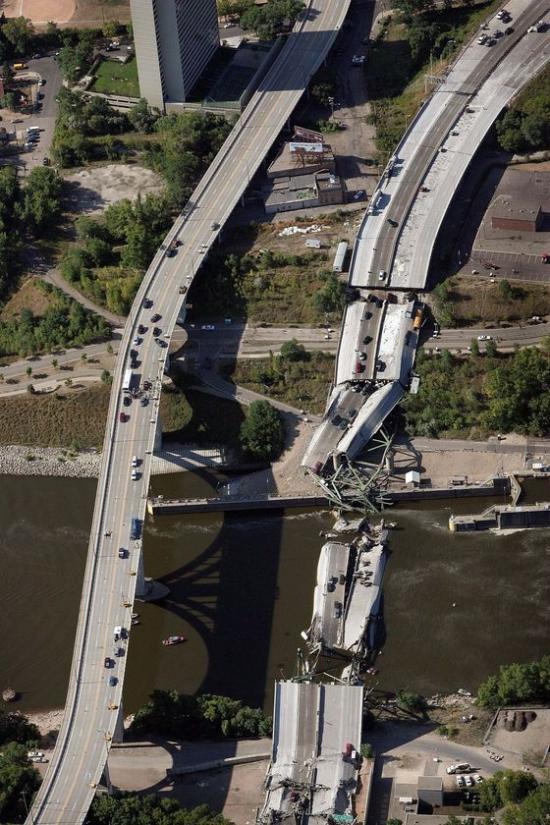
It’s been over a year since the tragic collapse of the westbound span of the I-35 Mississippi River Bridge, and the NTSB has issued its final report. At the time of the collapse, there was wide speculation that corrosion and a lack of maintenance had prompted the failure. However, in its report, the NTSB describes a fatal flaw dating back to the orignal design of the bridge. The collapse was primarily caused by the fact that the steel gusset plates (pictured below) were undersized, and insufficient to support the bridge. In addition, 2 inches of concrete had been added to the road’s surface over the years increasing the dead load by 20%. Finally, at the time of the collapse, 578,000 pounds of construction equipment and materials had been resting just above the bridge’s weakest point. The rest, as they say, is history.
 Previous Article
Previous Article
Post a Comment